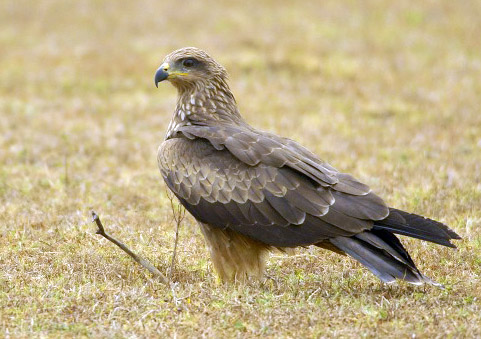Facts About Black kite
The black kite is a medium-sized bird of prey that belongs to the Accipitridae family. Renowned for its opportunistic hunting style and distinctive angled wings and forked tail, this bird is a familiar sight in various parts of the world. Black kites inhabit temperate and tropical regions across Eurasia, Australasia, and Oceania, where several subspecies exist, though their classification and potential hybridization with species like the red kite remain subjects of expert debate.
One of the most striking characteristics of the black kite is its soaring flight patterns. These birds glide on thermals, utilizing rising warm air currents to search for food. As opportunistic feeders, black kites display dietary flexibility; they consume live animals, fish, refuse, and carrion. Their adaptability extends to urban environments, where they are often seen circling over cities in search of easy meals.
During breeding, black kites perform a series of behaviors including nest building, copulation, incubation, and caring for their young. Breeding seasons and habits can vary depending on the specific population and region.
Black kites are widespread, with a range encompassing Europe, Asia, Africa, and Australia. In temperate regions, they are often migratory, while in tropical areas, they tend to be resident. Their populations can fluctuate significantly in response to environmental factors like rainfall and monsoons.
Despite their adaptability, black kites face several threats, including electrocution from perching on wires, collisions with vehicles, poisoning from contaminated food sources, and predation by larger birds such as the Eurasian eagle-owl.

 Mozambique
Mozambique